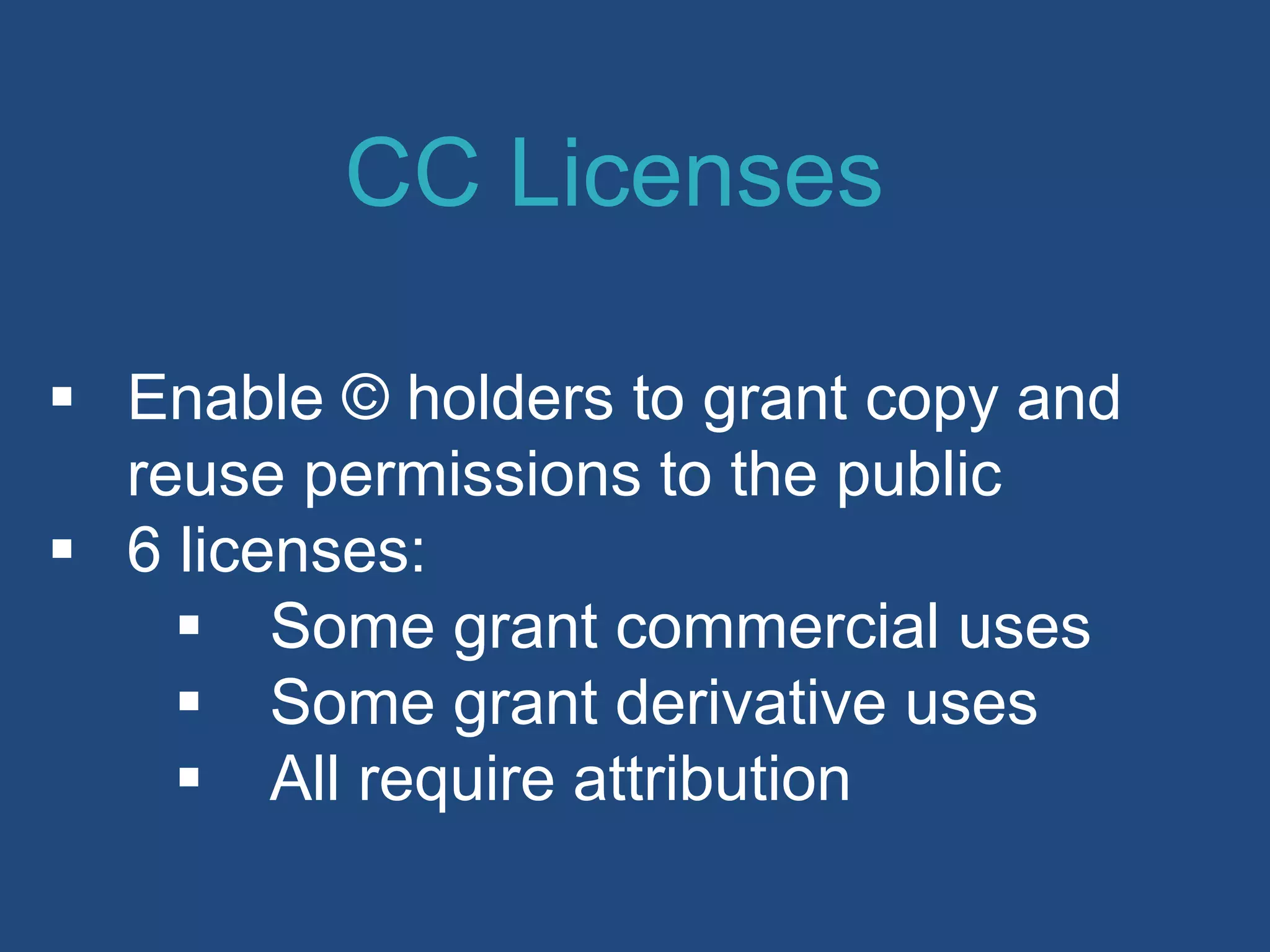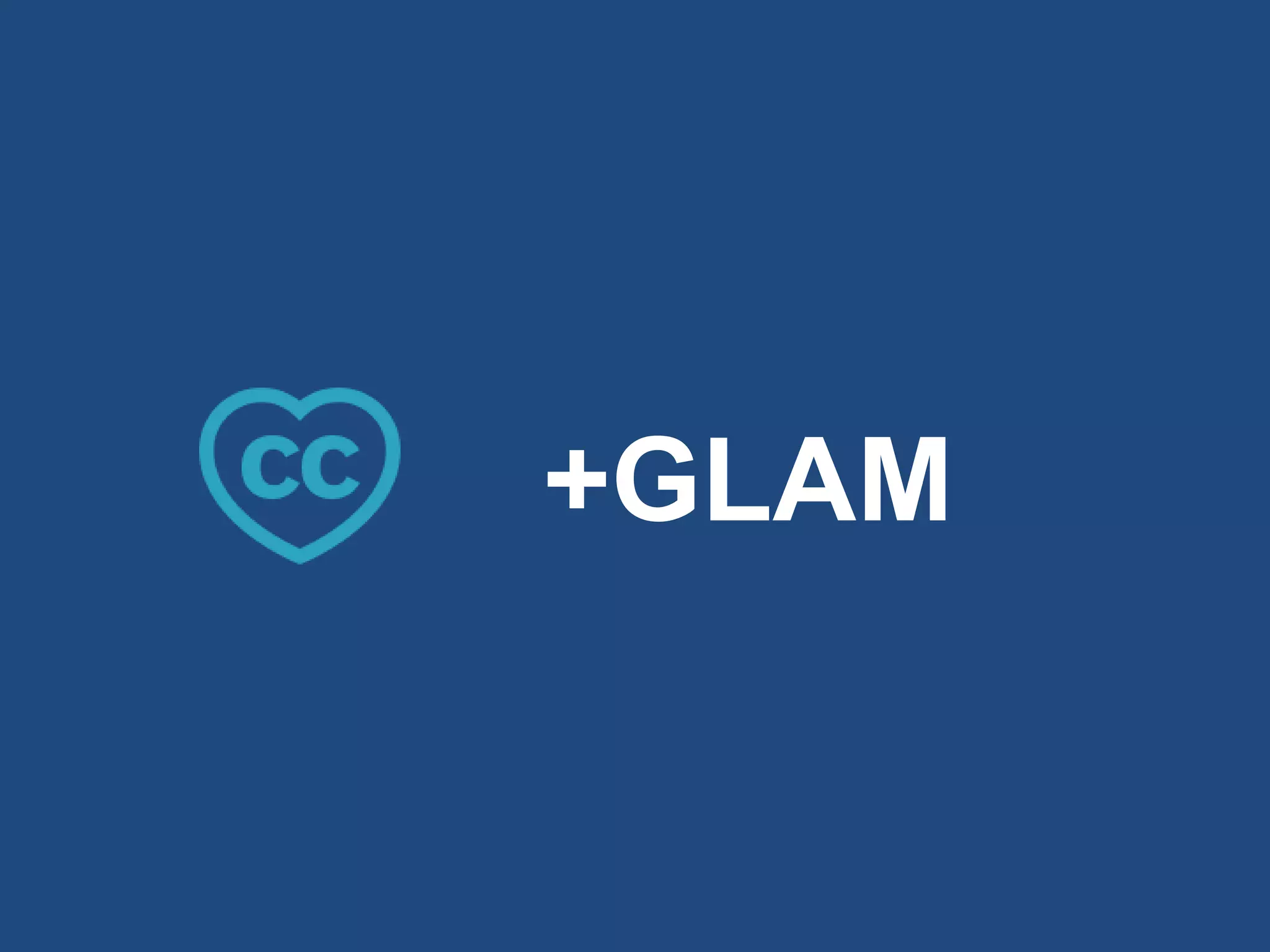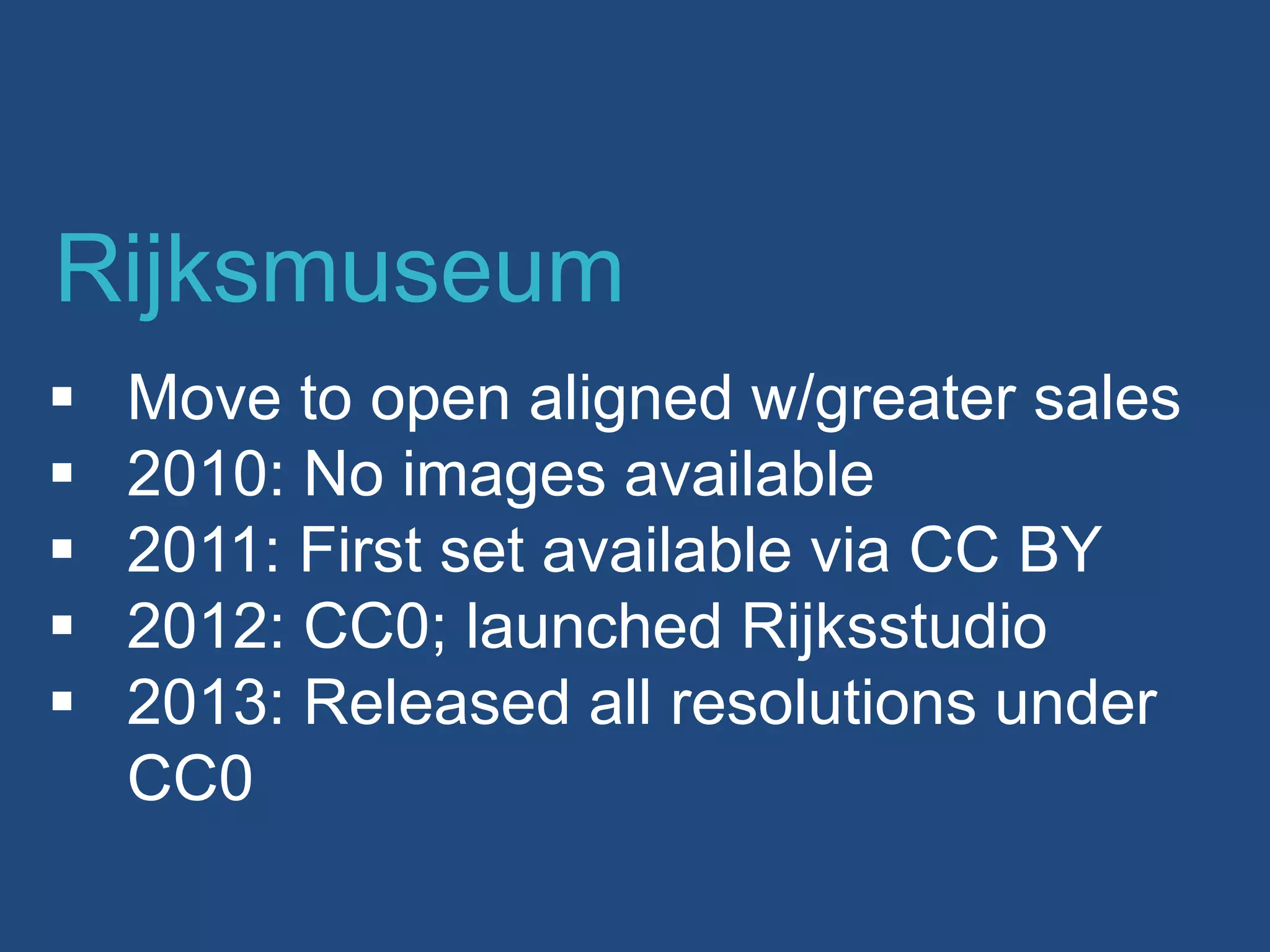The document discusses the system of Creative Commons (CC) licenses that allows copyright holders to grant permissions for cultural works and data, facilitating public access and reuse. It highlights examples of various institutions like the Rijksmuseum and Smithsonian Cooper-Hewitt that have benefitted from open access to their collections, encouraging community engagement and collaboration. The implementation of open collections is shown to enhance institutional reach, foster goodwill, and promote innovative funding models.






































